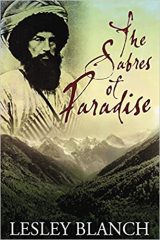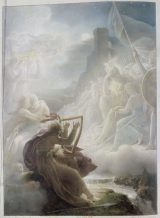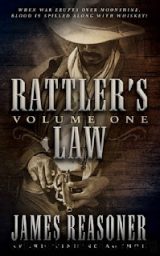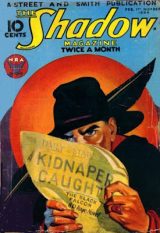Sensor Sweep: Metal Hurlant, Sabres of Dune, Jules Verne, and PulpFest
Monday , 6, December 2021 Uncategorized Leave a comment Dismal Disney (Arkhaven Comics): Anyway, thanks to his budget cuts rioting has become a regular occurrence at Disney World. There have been three this year. Mostly, it came down to bad crowd control at various events. I will say that again, there was bad crowd control at Disney World. In 2019 there was no company on Earth better at handling the flow of people than WDW, but thanks to Chapek’s layoffs, the people who knew how to do that are gone.
Dismal Disney (Arkhaven Comics): Anyway, thanks to his budget cuts rioting has become a regular occurrence at Disney World. There have been three this year. Mostly, it came down to bad crowd control at various events. I will say that again, there was bad crowd control at Disney World. In 2019 there was no company on Earth better at handling the flow of people than WDW, but thanks to Chapek’s layoffs, the people who knew how to do that are gone.
Review (Dazed Digital): “When the French say ‘science fiction’, they are not (referring to), as you might think, HG Wells or ‘Star Trek’ or even Jules Verne,” reads the intro to Heavy Metal’s first issue. “‘Science fiction’ is a term which can sufficiently define Big Macs, South America, Methodism, or a weird neighbour. Vogue Magazine, anything Belgian, and pop-top cans are certainly science fiction. The Humanoid ‘Moebius’, writing in Metal Hurlant, describes how, while listening to a Johnny Cash album, he realised that science fiction is a cathedral. Are you beginning, dear reader, to sufficiently misunderstand?”
 Fiction (Los Angeles Review of Books): Anyone who has obsessed over the mythology of Dune will immediately recognize the language Herbert borrowed from Blanch’s work. Chakobsa, a Caucasian hunting language, becomes the language of a galactic diaspora in Herbert’s universe. Kanly, from a word for blood feud among the Islamic tribes of the Caucasus, signifies a vendetta between Dune’s great spacefaring dynasties. Kindjal, the personal weapon of the region’s Islamic warriors, becomes a knife favored by Herbert’s techno-aristocrats. As Blanch writes, “No Caucasian man was properly dressed without his kindjal.”
Fiction (Los Angeles Review of Books): Anyone who has obsessed over the mythology of Dune will immediately recognize the language Herbert borrowed from Blanch’s work. Chakobsa, a Caucasian hunting language, becomes the language of a galactic diaspora in Herbert’s universe. Kanly, from a word for blood feud among the Islamic tribes of the Caucasus, signifies a vendetta between Dune’s great spacefaring dynasties. Kindjal, the personal weapon of the region’s Islamic warriors, becomes a knife favored by Herbert’s techno-aristocrats. As Blanch writes, “No Caucasian man was properly dressed without his kindjal.”
Remembrance (Brain Leakage): 17 Years ago today, the Second Battle of Fallujah began. It was the single largest urban battle US forces engaged in since Hue City, Vietnam, in 1968. I usually don’t make a big deal of memorializing it, but maybe I should.
The men I fought alongside in Fallujah were the best men I ever knew. Not all of them made it. None of us made it home unchanged.
I share my worst memories with my bravest brothers.
I truly would not have it any other way.
Review (With Both Hands): The way in which art, music poetry and stories, can inspire men to stoically face their own deaths is a remarkable piece of social technology. It shouldn’t be surprising that some of the most striking examples of this that we have come from the Decisive Lifetime, that period of Western history when nation-states employed social technology just like this to drive society in the service of urgent public policy.
Tolkien (Stormfields): For Tolkien, mythology touched the deepest part of our souls, and invites us to explore the beauty of creation and to discover and participate in the sacramental nature of life. Only in the True West could one find a proper understanding of order, virtue, and liberty. As Tolkien himself said, the mythology and purpose guiding The Lord of the Rings was nothing less than the return to Christendom. His Middle-earth mythology, he hoped, would serve as a wake-up call for the West, to return it to its pre-statist, pre-imperialist, pre-materialist phase.
 James MacPherson (DMR Books): For the artists/authors of northern and western Europe, here was something that was theirs, not something borrowed from the Greeks and Romans. It was ‘de-colonialization’, if you will. The Pre-Raphaelite School grew out of Romanticism. Thus, the Ossianic tales had some distant influence upon, for instance, Barry Windsor-Smith. I would dearly like to see an illustrated edition of The Poems of Ossian with BWS art.
James MacPherson (DMR Books): For the artists/authors of northern and western Europe, here was something that was theirs, not something borrowed from the Greeks and Romans. It was ‘de-colonialization’, if you will. The Pre-Raphaelite School grew out of Romanticism. Thus, the Ossianic tales had some distant influence upon, for instance, Barry Windsor-Smith. I would dearly like to see an illustrated edition of The Poems of Ossian with BWS art.
D&D (BDubs and Dragons): The term “Patron” was coined because many Patrons will end up looking up the PCs to handle various missions for them, since the PCs have the luxury of doing weekly (or at least frequent) session play. One thing you’ll find running major Patrons is that you and the Patron player will better understand why the Castellan doesn’t just clear out the Caves of Chaos himself, or whatever. He can’t be bothered. There’s usually much bigger threats and goals in front of the Patron than a clutch of monster lairs. That’s why Patrons offer cash and prizes for PCs to take care of small-fry problems.
 Review (The Chimney Sweep Reader): Flint makes for a fine protagonist as the first novel sees him tame the town and subsequent tales depict situations where he must maintain the peace. Whether it’s a circus that’s come to town or a fiery visitor from the Women’s Temperance Society looking to banish all whiskey, you can be sure Flint will find himself in the middle of it and having to use his fast draw to solve the problem. But he’s far from alone in his efforts, supported by major characters such as his loyal but rough-around-the-edges deputy Cully Markham, and a Scottish saloon proprietor named Angus MacQuarrie who can wield a mean shotgun. Other characters include the female town doctor, the school master, and Cully’s brother Joshua who also happens to be the town pastor.
Review (The Chimney Sweep Reader): Flint makes for a fine protagonist as the first novel sees him tame the town and subsequent tales depict situations where he must maintain the peace. Whether it’s a circus that’s come to town or a fiery visitor from the Women’s Temperance Society looking to banish all whiskey, you can be sure Flint will find himself in the middle of it and having to use his fast draw to solve the problem. But he’s far from alone in his efforts, supported by major characters such as his loyal but rough-around-the-edges deputy Cully Markham, and a Scottish saloon proprietor named Angus MacQuarrie who can wield a mean shotgun. Other characters include the female town doctor, the school master, and Cully’s brother Joshua who also happens to be the town pastor.
Review (The Pulp.Net) This collection has 12 stories; nine of them had appeared in digest mystery magazines in the 1950s. We get a few stories that are inspired by unwritten Holmes stories. But we also see stories where Pons starts to become his own character, and has adventures that might have been done by Conan Doyle. These include the “Grice-Paterson Curse,” which is among the best of the Pons stories.
Jules Verne (The Cryptofictional Records Wing): The novel begins when Barbicane, the President of the Baltimore Gun Club, announces his plan to send a projectile to the moon as a “signal” (both to the nations of Earth and to anyone living on the moon). The nation (and even the world) rallies to the challenge and construction of a giant cannon (columbiad) proceeds. Sometime before the firing of the cannon, a French poet/showman named Michel Ardan arrives and announces his intention to travel to the moon inside the Gun Club’s projectile. Soon, Barbicane and his rival Nicholl also agree to accompany Ardan in the newly-refitted capsule. At the end of the novel, the cannon is fired, and an observer notes that the capsule has apparently gone into orbit around the moon.
 Review (Rough Edges) However, I don’t think many readers then or now enjoy the Shadow novels solely because of the mystery angles. It seems to me that the two primary elements in the series’ appeal are action and atmosphere, and Gibson delivers on those quite well in “The Black Falcon”. There are several scenes where The Shadow appears unexpectedly, and Gibson always does a great job on those. The same is true of the shootouts between The Shadow and various hordes of gangsters. The bullets really fly in those, and I always enjoy them.
Review (Rough Edges) However, I don’t think many readers then or now enjoy the Shadow novels solely because of the mystery angles. It seems to me that the two primary elements in the series’ appeal are action and atmosphere, and Gibson delivers on those quite well in “The Black Falcon”. There are several scenes where The Shadow appears unexpectedly, and Gibson always does a great job on those. The same is true of the shootouts between The Shadow and various hordes of gangsters. The bullets really fly in those, and I always enjoy them.
Conventions (PulpFest): PulpFest 2021 wrapped up two-and-a-half weeks ago. But for me, the work continued as I edited and processed almost 10-and-three-quarters hours of pulp-related programming from the pulp convention.
You can check out 15 PulpFest 2021 events here at ThePulp.Net. You’ll find links to each audio file on our PulpFest 2021 page.
Please give us your valuable comment